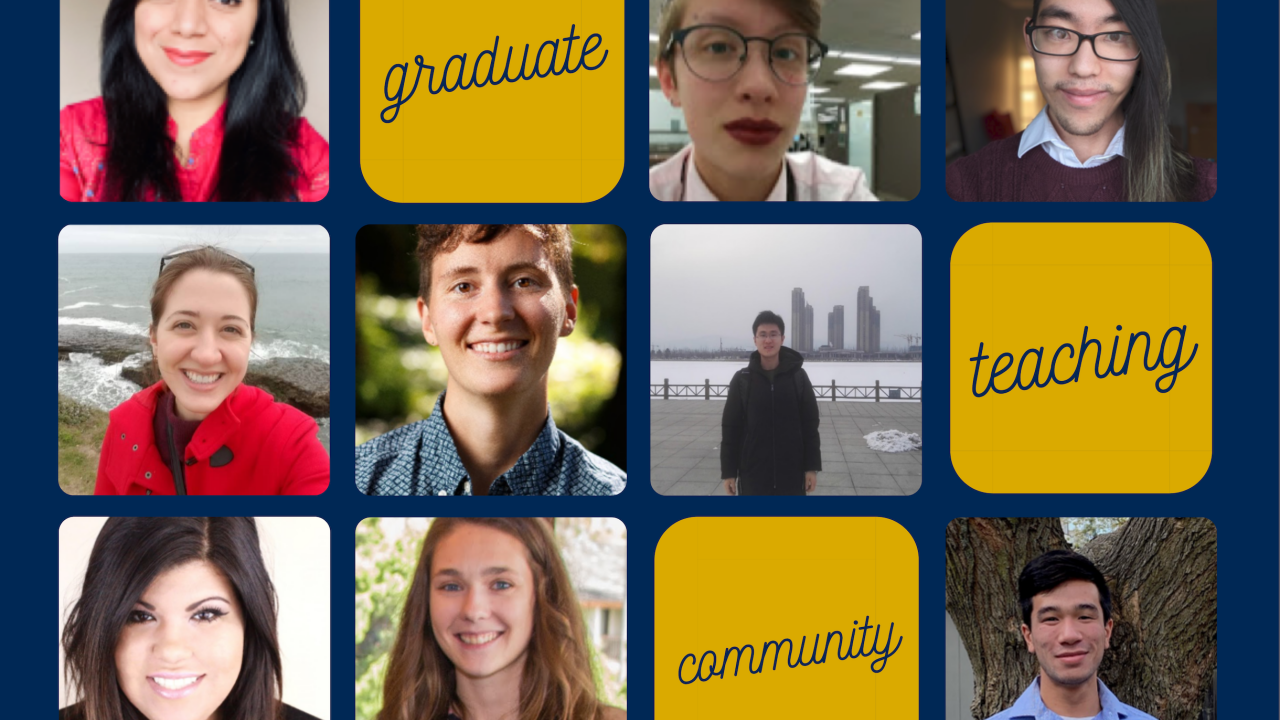
Graduate Teaching Community Reflections: Winter 2021
Introduction
Members of the Graduate Teaching Community reflected on the following prompt at the conclusion of the Winter 2021 quarter: How did reading and discussing Kevin Gannon’s Radical Hope shape your thinking about teaching?
Sudikshya Bhandari, PhD student, Geography Graduate Group

It has been a wonderful experience to have been surrounded by great teachers throughout my academic journey. I have been inspired to get involved in teaching from my experiences as a student. The implications of teaching on one’s academic and even personal journey is immense.
For me, it is important to be aware about the values within teaching and acknowledge them. Values could be subjective in teaching, but Radical Hope has been a great source in shaping my awareness about radical values to be incorporated in teaching and learning. This book has helped me to think about the widest possible significance that teaching can have as a tool, a strategy or an action, both in tangible and intangible ways. As a student or teaching assistant here at UC Davis or as an assistant lecturer back in Kathmandu, the positionality that I have in each of these roles is different and difficult to compare. As a student, I hold a different perspective about teaching than I have being an instructor. Often times there is consideration of either perspective and taking both together into consideration might be challenging. Radical Hope encompasses the perspectives of students and teachers to help find a common ground to achieve a better learning environment. Teaching involves teacher-student dynamics within an institution and there is a need to balance these dynamics to make sure that objectives of teaching align well with different actors in this domain. In this regard, Radical Hope provides insights about meaningful access, inclusivity, structural change, transformation, and power issues with a plausible approach.
As an international student, I have been fortunate to experience teaching systems in two different countries: Nepal and USA. There is a huge difference in the way teaching is practiced in both of these countries. Nonetheless, the motive behind teaching remains the same – sharing and exchanging knowledge for a better future. This experience that I have gained by being a part of two different academic systems is valuable to me as I see opportunities to connect different teaching systems. Acknowledging cultural dimensions within teaching is integral to understanding ways to integrate different approaches to it. In this context, Radical Hope has been very successful to incorporate insights on cultural values within teaching. It offers views on collaboration and transformation that can be applied to teaching within different cultural contexts.
It is wonderful to read and discuss a book that provides hope to students like me aspiring to become educators in the near future. It has a great impact on my ideas and notion about teaching in a more radical way. Moreover, it has also motivated me to think about how I can integrate the insights that have been offered in the book into my practice in the future.
Tara Caso, PhD Student, Plant Biology Graduate Group

Reading and discussing Radical Hope made me think a lot about the most basic, simple elements of teaching and mentoring, which is something that I hadn’t necessarily done before. It was interesting to have an in-depth consideration and discussion of what many instructors probably take for granted, such as the structure of a class syllabus, the way that an instructor responds to questions, how an instructor might go about introducing the class in the first place, etc.
As someone who is interested in remaining in education and academia, it was both important and deeply compelling to turn a critical eye towards the behavior of an instructor, especially while I’m still a student. The topics covered in the book pushed me to re-evaluate my own interpretations and longstanding beliefs about pedagogy, both as a student and an instructor. I think that before digging into the book, I had already thought a lot about my own attitudes toward and experiences with teaching. However, I still viewed myself or a hypothetical instructor as more of a separate entity from the class, someone who—while trying to facilitate active learning amongst the students—is also mainly there to dispense information and be a frame of reference.
This perspective of what I want in an instructor, and how I would like to behave as an instructor, has definitely changed. Radical Hope made me think a lot about how empathy, hope, and honesty fit into a classroom, and how the main role of an instructor shouldn’t be that of someone who showers information upon the students from on high. Instead, they should be a source of guidance and stability for the students, as well as being someone who can model failure while still showing how to learn from the experience. In my opinion, one of the most important jobs of an instructor is to demonstrate that it’s okay to take risks with one’s education, and to encourage students to ask questions, even “stupid” ones. Supporting critical thinking and providing a welcoming space that enables students to actually wrestle with material should be at the forefront of every instructor’s mind.
In sum, working through Radical Hope gave me a lot to think about when it comes to how I mentally construct a pedagogical framework of myself, my instructors, and my students. I can see some cracks in how I used to think, and I have a lot of new ideas for how I would want to shift my methods of teaching in the future.
Ian T. Lim, PhD Student, Physics
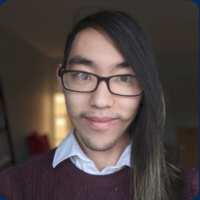
In his book Radical Hope, Kevin Gannon makes a compelling case for why we should embrace classrooms as places of growth and transformation, rather than places of stagnation and death. For me, Radical Hope was an affirmation of many of the things I already believe about teaching—that it requires both courage and vulnerability, that it can be an empowering act when done right, and that its purpose is not just to teach learners what to think but how to think.
This book reinforces the idea that equity in education is a design choice—it never happens by accident. For those of us used to the traditional lecture-homework-midterm-final model, anything else can seem scary and, well, radical by comparison. But teaching with radical hope means taking a hard look at the classroom structures we've created and asking ourselves whether they really support student learning or whether they merely make the instructor’s job easier. It calls on us to consider the alternatives—inquiry-based learning, flipped classrooms, mastery-based grading, even ungrading. Our practices in the classroom must be aligned with our values as teachers.
And radical hope also calls on us to challenge and reimagine our roles in the classroom as instructors. Many instructors have lamented the increase in academic dishonesty ever since the transition to remote teaching and learning. Some have responded with increasingly restrictive technological constraints such as lockdown browsers in the hopes of catching cheaters or cutting off their resources. But as soon as our teaching is founded in a place of fear and mistrust, we’ve already failed our students as instructors, because at heart, cheating is not a technological problem—it’s a cultural one.
In some ways, I think the philosophy of radical hope is tied up with another big idea, the notion of restorative justice. When individuals fail, when they cause harm, when they don't live up to the expectations we have set of them—what then? Do we decide their failures have branded them as forever beyond our help? Or do we offer a hand anyway? As Ted Danson’s The Good Place character Michael says, “What matters isn't if people are good or bad. What matters is if they're trying to be better today than they were yesterday.”
Discussing Radical Hope has reinforced my commitment to creating equitable learning spaces which prioritize equal opportunity over equal treatment. It has pushed me to think more about how to address challenging situations with empathy and grace.
Elizabeth Mojica, PhD Student, Ecology
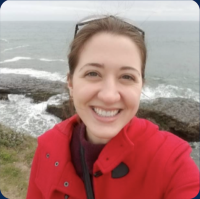
I have two major goals as a teaching assistant: the first is to help students learn what is currently known in my field, and the second is to help them mature as independent thinkers. The book Radical Hope helped me think about the ways we can better achieve these goals by bolstering inclusivity, accessibility, and engagement.
Students learn best in an inclusive environment where everyone feels respected and valued. On the first day of class, we can set the tone for this environment by giving students the power to establish classroom expectations. For example, they can decide whether cell phone use in the class will be acceptable, and they can more broadly describe how students expect to be treated by their classmates. As the course progresses, we can continue to prioritize inclusivity by ensuring there is space for everyone to participate and share their ideas. Furthermore, we can demonstrate our respect for students by believing them when they have personal problems and request accommodations.
Before reading this book, I had not heard of Universal Design for Learning. In this framework, course material should be easily accessible for all and presented in multiple formats. As an undergraduate, I took many courses where all material was written on the chalkboard, and students needed to write everything down to leave the classroom with the necessary information. At my university, we had a great Student Disabilities Center, and I knew that students could easily arrange for someone else to take notes for them in these situations if needed. It wasn’t until reading this book that I realized the burden of gaining access is still placed on the student. Instead of requiring students to go out of their way to secure access to our material, we can provide this material in multiple accessible mediums for everyone, not just the people who require it. Everyone benefits from this strategy. For example, by uploading course readings as PDFs formatted for screen-readers, all students can better access the material by being able to listen to their readings while driving or exercising.
To make the impact of the course long-lasting, we can strengthen student engagement. A great way to do this is by giving students ownership of their education. When possible, we can give students choice. For example, we can let students explore the sources that speak to the issues in which they are interested. Additionally, we can give students options in how they demonstrate their knowledge. Some students might choose to write an essay, while others opt for a presentation or video.
Discussing the book Radical Hope with the Graduate Teaching Community has transformed the way I think about education. I am eager to incorporate these strategies into my classroom.
Hannah Nelson, PhD Student, Population Biology Graduate Group

SETTING: A global pandemic. Physical classrooms have been replaced by endless Zoom meetings, filled with silent, black screens. Teaching begins to feel like speaking into the void. Remembering to unmute and record seem like Sisyphean tasks. The constant anxiety and stress presses down on everyone.
INSTRUCTOR: “Woe is me! Another quarter of teaching in this mess? Why am I even doing this?”
KEVIN GANNON: “Teaching is an act of radical hope.”
INSTRUCTOR: “You dare speak of hope right now? I will not stop swimming waiting for that lifeboat…”
KEVIN GANNON: “Hope, as Rebecca Solnit has famously declared, ‘is not a lottery ticket you can sit on the sofa and clutch, feeling lucky. It is the axe you break down doors with in an emergency.’”
Reading and discussing Kevin Gannon’s Radical Hope this quarter reminded me of why I love teaching. To endeavor to produce a better future through a process of “fundamental, root-level transformation” is a radical pursuit, in any quarter. But this quarter especially, the promise of that purpose has become especially evident to me.
I’ve witnessed instructors set aside their well-worn lesson plans to embrace new teaching strategies, like leading interactive activities via Google Jamboards, instead of just lecturing. Traditional high-stakes, memorization-based exams have been replaced with low-stakes, alternative assessments. Strict deadlines are no longer always enforced. Discord servers and Slack workspaces have been planted and bloomed alongside virtual classrooms, allowing students to continue to connect with each other.
These actions were not committed blindly—they were born out of intense reflection and intention. How can I support my students so that they can learn in this moment? In what ways can my lessons be more student-centered? Inclusive? Engaging? How do I encourage choice, collaboration, agency? What does teaching with empathy look like?
The central tenet of Radical Hope is that we should always be engaging thoughtfully with these questions by developing our teaching “praxis,” which Gannon defines as the “the bridging of theory and practice to effect change.” Pedagogy is never neutral. Every action we take as educators, from the way we design our syllabus to the scholars we choose to highlight in our lessons, send important (and often unintended) messages to our students. These messages can deeply affect their ability and desire to learn.
At times, reading this book was painful. I realized some of the ways in which my current teaching practices (e.g., my late policy) are probably harming my students. I also could clearly see the gap between who I am as an instructor now and the instructor I aspire to be. But mostly Radical Hope was inspirational. I was introduced to many brilliant ideas such as the unessay, where rather than a traditional paper on an assigned topic, students choose their own topic (related to the course material) and develop a product that can take on any form (e.g., podcast, video, poem, etc.). This product is then evaluated on the extent that it is compelling and effective. The theoretical frameworks, case studies, and reflection questions in this book provided me with a blueprint for transforming my teaching.
My hope as an instructor is that we will not forget this moment and return to “normal” teaching. When our students are allowed back into our physical classrooms, we cannot resume all of our old exclusionary, instructor-focused, inequitable, and adversarial teaching practices. We must escape from these traps if we are really aiming for transformation with and among our students. Armed with Radical Hope, I feel hopeful that we can break down these pedagogical doors.
Wenjun Niu, PhD Student, Mathematics

I am very glad that I was able to participate in the GTC meetings this quarter, where I met graduate students from various disciplines who share the same passion for teaching. We discussed Radical Hope by Kevin M. Gannon, a thoughtful book that examines different aspects of teaching in higher education.
Among different topics, the one I found most interesting is the idea of student-centered teaching. Traditional education, especially higher education, is described as a banking concept. It asserts that the students are passive learners whose whole purpose is to receive information from their teacher, while the teacher determines what they learn and how much they learn. Kevin Gannon argued that higher education should be student-centered, in the way that students need to be involved in the course design, in discovery of new knowledge, as well as application of the knowledge. In later chapters, more specific suggestions are given to encourage students’ choice and collaboration.
One has to, as the author did in the last chapter, admit that such change is not easy. Professors and students alike are very used to the traditional way of teaching. To give an example, during one quarter, I asked the students to form small groups to work on homework problems and present their solutions to each other. I later received a review by a student stating that the TA is supposed to teach the students how to solve the problems. This and many other examples show that patience is needed when implementing student-centered pedagogy.
Nevertheless, the idea of student-centered teaching is very appealing, and discussing with GTC members inspired me with many concrete resolutions. First, in a math class, homework can serve as means to encourage collaboration and choice, and students can be involved in not only solving problems, but finding the right questions to ask. Second, covering all the material shouldn’t be the ultimate goal of teaching, and students’ understanding of the material should be closely monitored as the class progresses. Third, in discussion sessions, students can learn how to collaborate with each other before they start doing it, so that the use of time will be more effective. Fourth, low stake assignments can be designed to encourage students to discover knowledge on their own.
As summer sessions are approaching, I am very excited about being able to apply these strategies in my teaching, and I hope these will benefit the students.
Haley Rains, PhD Student, Native American Studies

One of the most important chapters in Gannon’s book, Radical Hope: A Teaching Manifesto, is chapter four: “Teaching and Learning Inclusively.” Gannon underscores the importance of including marginalized perspectives in the classroom and being mindful about not including only the dominant voices within a given scholarly field. He also reminds us, as educators, that we must be cognizant of the struggles that students from underrepresented communities often endure in higher education, which includes “navigating the treacherous terrain of a world that sometimes resents your presence” (p. 56). In other words, members of historically marginalized communities in higher education are often burdened with the task of navigating a world not made for (or by) them. I myself am a member of a historically marginalized community. I am a Native American (Muscogee Creek) woman, and I aspire to a career in higher education, although historically, the presence of people like me in academia has been quite rare. While Native Americans make up 6.6 million people in the United States, Native American teachers make up 0.4% of the teaching population. I strive to bring both the Native American perspective as well as the perspective of historically marginalized and excluded populations to both my own classrooms as a student and an instructor, as well as to the larger UC-Davis community, because I believe diverse representation in higher education is of the utmost importance.
While reading Gannon’s book, I was compelled to reflect on the epistemological frameworks that educators and students are oftentimes conditioned to accept. We tend to subscribe to pre-established constructs within higher education and don't question the monolithic nature of these academic enterprises. As an Associate Instructor, I design my syllabi and rubrics in a way that empowers students by valuing their unique experiences and backgrounds because, as Gannon suggests, “If we are calibrating our course design and pedagogy toward some ideal student archetype, then we are deciding to exclude any students who don’t fit that mold” (p. 57-58). In other words, if we are to create truly inclusive classrooms, we must start by looking critically at our own pedagogy. We must also acknowledge that, historically, the nature of higher education has been one of exclusion; therefore, as educators, we must interrogate assumptions about truth and claims to legitimacy in our classrooms. Take for example, the fluid nature of historical narratives. In my field, Native American Studies, indigenous scholars challenge the Western version of history that excludes the indigenous perspective. When researching and documenting indigenous cultures and practices, non-indigenous scholars tend to construct narratives in which indigenous people belong to a vanishing race on the verge of extinction. This narrative is not only false, it is harmful and therefore must be challenged. After all, as Gannon observes, “history is not just ‘what happened,’ but the product of conversations and debates among historians” (p. 55). In other words, it is important for us to understand that inclusivity isn't just obliging multiple perspectives: it's accepting that at their core, all historical narratives are constructs. Accepting this fact allows us to explore multiple perspectives and embrace diverse opinions in our classrooms.
As educators, we must encourage students to value and to seek complexity and nuance in all ideas and concepts. The way we construct and frame ideas and concepts in our classrooms must be purposeful. We have a responsibility to validate ideas, even if they may be at odds with our own. We must always validate students’ perspectives by celebrating their contributions to class discussions. True inclusivity requires that we, as educators, create communities in our classrooms in which every student feels empowered to express their ideas.
Brooke Wickman, PhD student, Graduate Group in Nutritional Biology

In his book Radical Hope: A Teaching Manifesto, Kevin M. Gannon delivers a captivating call to action for educators to rethink and restructure traditional higher education. Gannon explains that “pedagogical praxis centered in radical hope . . . fosters openness and inclusivity, critical reflection, dialogue and conversation, and a commitment to making higher education accessible and meaningful for all of our students.”
In chapter 6, “Encouraging Choice, Collaboration, and Agency,” Gannon challenges the idea that course instructors should be authoritarian figures in the classroom. Policies can set classroom expectations, but why not involve students in determining classroom agreements? Collaborative expectation setting allows instructors and students to work collegially to determine classroom policies. Collaborative expectation setting eliminates the need for instructors to be behavior police, minimizes the hierarchical power imbalance of the classroom structure, and prevents adversarial confrontations related to classroom behavior. Shifting from a classroom management philosophy to collaborative expectation setting enables active student participation and engagement.
Along with collaborative expectation setting, offering students choices can increase student autonomy in their education. When students have the power to make choices in a course, students may become more interested and invested in their work while expressing creativity. Offering choices may not be realistic in every classroom or for every assignment, but choice can be incorporated in different ways. Learning objectives will shape what instructors want students to take away from a course, but specific learning outcomes can be met through a variety of means. One way to offer choice in a course is with the unessay. The unessay offers students flexibility and unrestricted student expression of learning, often evaluated for how compelling it is. If instructors should teach and students should learn, assessment and expression of knowledge do not necessarily need to be restrained.
In chapter 7, “A Syllabus Worth Reading,” Gannon discusses how the syllabus, often the first impression that students get of a course, can be reconsidered to empower students and to embody our pedagogy. The syllabus can set an initial tone for a course, and policies and punishment practices do not invite students into a collaborative and active learning space. The implicit and explicit messaging of a syllabus can express student control in learning, a student-centered approach, and fulfillment of course learning objectives. Policy language may be required by the university, but personalized language can be inclusive and respectful. A syllabus does not have to express an instructor’s expectation of the worst from students. Instead, a syllabus can embody the teaching philosophy of an instructor with intentional language.
Reading and discussing Radical Hope with fellow graduate students allowed me to think about my own teaching philosophy, my goals as an instructor, and how to effectively reach these goals. I don’t want to teach for power, I want to teach to empower students. I want to invite students into their learning experience by collaborating with them and encouraging active participation in all elements of my courses. The many takeaways of Gannon’s Radical Hope are influential in the development of a teaching philosophy and provide tools as we reshape our roles as educators.
Nathan Yoshino, PhD Student, Chemistry
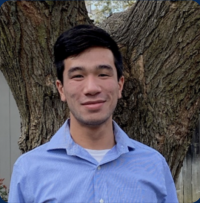
I had initially decided that I wanted to pursue a teaching-focused career when I was an undergraduate, motivated by the goal to make a positive change in students’ lives and to get them excited about chemistry. However, over the past few years, I can tell that my teaching philosophy and outlook had changed to become more pragmatic and perhaps jaded.
Often at large institutions, instruction succumbs to the “banking model” where information is simply exchanged between instructors and students, frequently void of critical thinking and passion. This is fueled by an attitude that the entire purpose of higher education is to provide career and job opportunities. A few years into my teaching career, my outlook on teaching had shifted to “while this system is flawed, it is my job as instructor to help them jump through the correct academic hoops to give them the best chance to succeed.” Reading and discussing Radical Hope this quarter has forced me to do some self-reflection about my teaching philosophy and practices.
A lot of these issues stem from our mindsets towards students - the culture of seeing them as adversaries or problems that need to be addressed. In order to change this culture, we need to actively oppose it not only in ourselves through reflection, but also by shutting down conversations complaining about students that permeates the environments in higher ed. Personally, this quarter I have begun to adopt a mindset when working with students more rooted in “what DO they know” instead of “what DON’T they know.” I have found this approach allows me to enter discussion with students more open-minded and able to reach each students’ individual needs better.
Another big takeaway from this quarter are the more collaborative instructional practices with students. Providing students more agency over their learning can foster more motivation. Looking into the future of my career, I hope to implement more open-ended assignments in the classroom, whether it be a research project where they can choose the format, or a voice in what smaller side-topics are covered that are of interest to them.
As teaching assistants, we are limited in what aspects of the course we can change. However, aspects like the way content or material is reviewed (group work, polls, power points etc.) can still be altered depending on the desires and needs of each section. Providing the students a stronger voice in the classroom breaks down the image of the instructor as an authority figure that must be submitted to and revered. It is replaced with a guide that works with each student to help them learn and grow.
Arran Rumbaugh, PhD Student, Agricultural and Environmental Chemistry
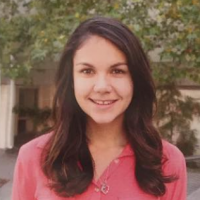
Being a part of the Graduate Teaching Community this past winter opened my eyes to the many challenges professors and students face in the higher education system. The book Radical Hope touched multiple portions of my own higher education career and style of teaching that I was not prepared for. Prior to reading this book, I believed that the higher education system needed some drastic changes, yet I was clueless on how to approach those changes. During my time at my undergraduate university, I succumbed to the “I just need an A” feeling, and “studying for the exam not for the future.” I felt that that I cheated myself out of an education because in the end I was more worried about a grade than I was about retention of knowledge.
During my first few years in graduate school, I reflected on the reasons I acted this way and how I truly saw education. Over the next few years, I strived to truly learn the material and understand how it applies to my everyday life. Yet, graduate school, as Kevin Gannon points out, engenders further problems. Although I aimed to learn beyond the purpose of a grade, Imposter Syndrome and the need to prove myself in graduate school built a rigid and overly critical attitude that I brought into the classroom as a teacher.
Similar to Kevin Gannon in Radical Hope, I treated my position as a teacher as a podium and the classroom as a space where students came to accept the knowledge I was giving them. I had little notion on inclusivity, patience, and compassion, and sadly expected students to learn the material in a similar manner how I once did. This is where the book Radical Hope altered my way of teaching. From this book, I learned three major lessons: 1) make my course and the material accessible for all students, 2) aim to treat each student equitably instead of equally, and 3) encourage students to view their education as collaborative instead of competitive.
I found myself lucky to be teaching whilst reading this book, because I could actively make changes to my teaching style and see how students responded. I was able to critically evaluate my own syllabus that acted as my student’s first impression of me. I worked on word choices during my discussions and laboratory sessions to show students I was approachable and understanding, rather than inflexible and uncompassionate. I also learned the importance of making the course material accessible to all students from all backgrounds. I know this is just the first step in a long journey ahead, but I feel like I have hope to make my future classrooms a welcoming space where we can approach the subject together instead of as just “the teacher” and “the student.”
